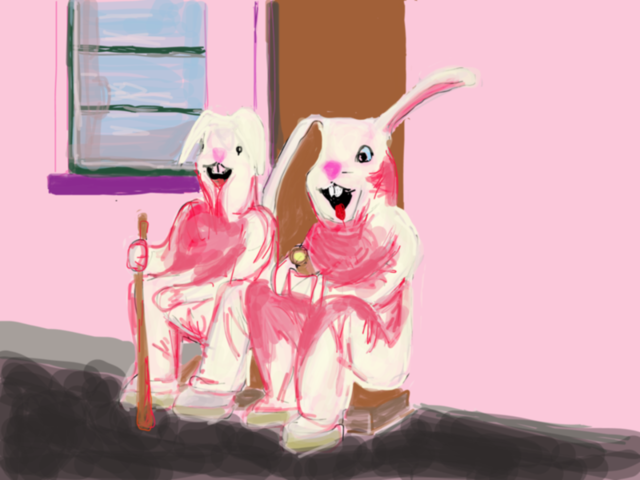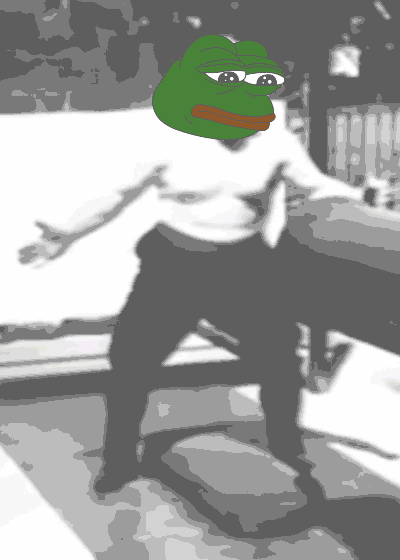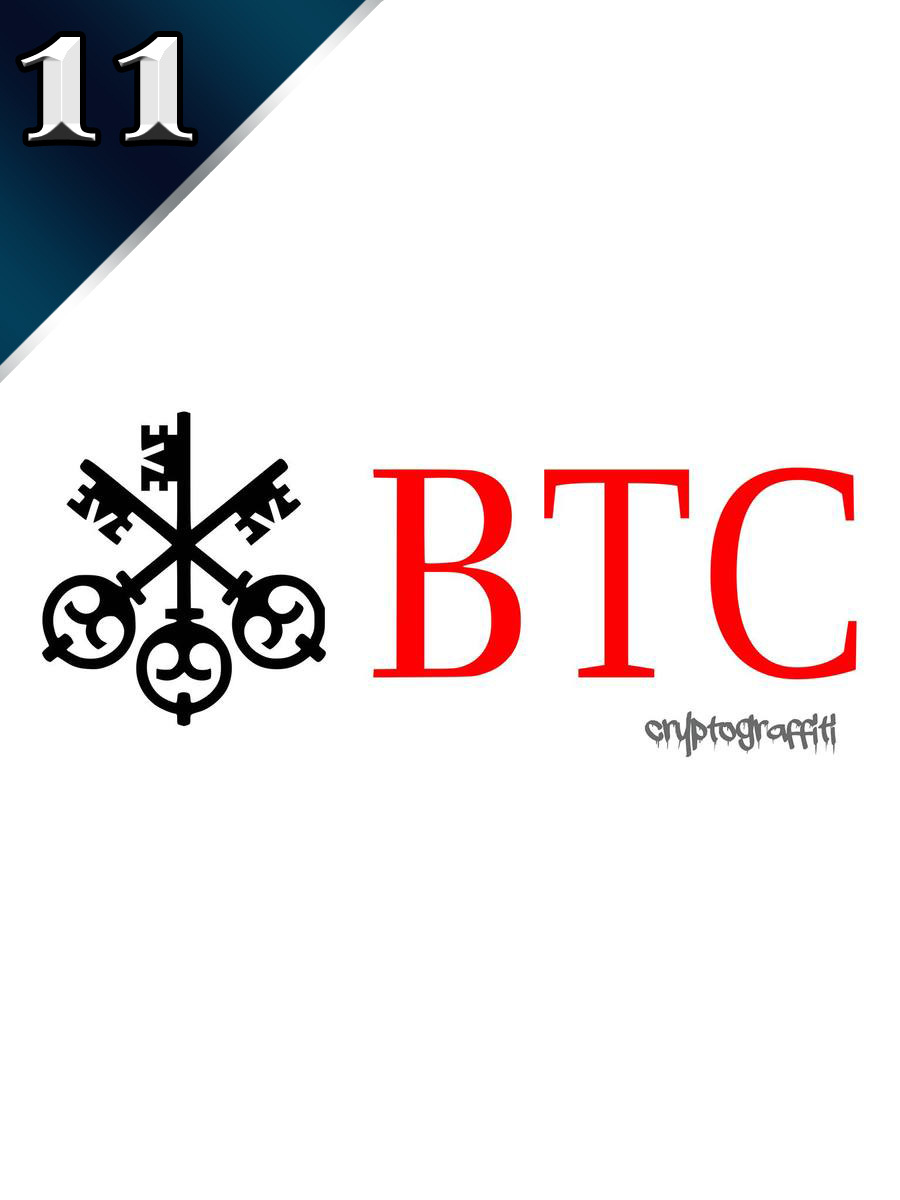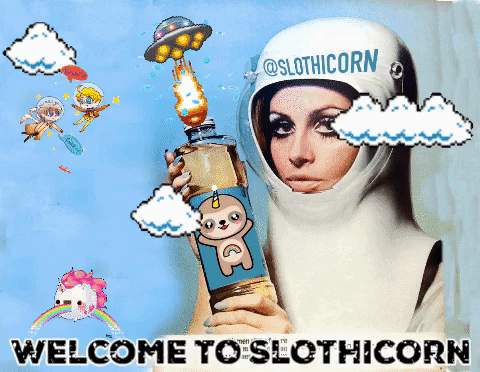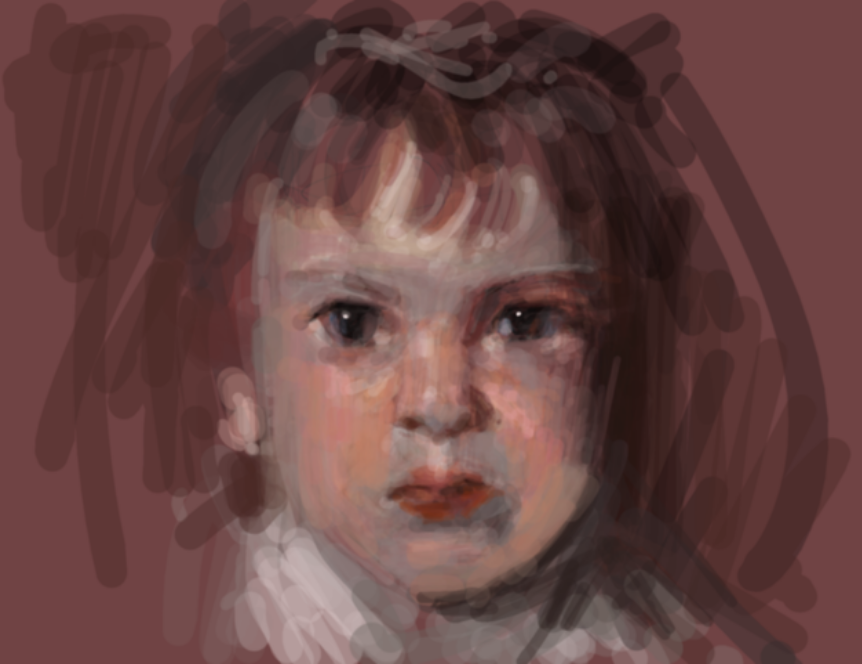*The article below is still relevant but a little out of date. Read this newer article if you want to learn how to tokenize your art and launch your own blockchain marketplace.
I created the GIF below in less than an hour. I then uploaded it to the Rare Pepe Wallet for review by the Rare Pepe Scientists (who publicly disavow the alt-right) and forgot about it for a week. When I checked back less than a week later, I had made $800 in sales by selling 25 copies. If I sell all 100 copies at that same price, I will make $3,200 dollars on a single meme. That’s more money than I have made selling art in 40 years.
Anyone can submit work to the Rare Pepe Wallet. The organization will take zero commission from you, the artist. There are opportunities for literally every artist of every skill level (creating pretty much any subject matter) to earn money on the blockchain. I know it sounds like a load of ridiculousness, but I’d suggest you read the rest of the article before dismissing this as "too good to be true."
Curio Cards Wants to Sell Your Art and Give You 100% of the Proceeds. Yes, YOU.
Cryptograffiti
BTC
Edition of 2000
Daniel Friedman
Edition of 300
Travis Uhrig is the founder of Curio Cards and he organizes the Bitcoin meetup group in San Francisco, which boasts over 6,000 members. He has a background in science and business and has worked as a system administrator at an environmental non-profit: "Nothing to do with crypto at all," as Travis says. Then in May, he quit his job altogether to become full-time crypto. This is around the same time that he launched the first set of Curio Cards. Curio Card's mission is to create a platform for artists and collectors that finally benefits artists. As it states on their website: "Until now it's not been possible to sell digital artwork without massive fees, theft, or restrictive DRM." Curio Cards is changing that. The project is doing phenomenally well, with over a thousand cards sold and artists making on average $300 - $900, according to Uhrig. Any artist can submit their work for free to be voted on at community.curio.cards. So why do this? According to Travis:
"Crypto needs artists, is my sense. Everyone always says that bitcoin is too complicated to explain to people, but you'll look at subcultures -- hip hop, hipster -- all these different groups, they have very complex rules of engagement, very complex rules of etiquette, and not everyone understands them -- and it's just fine because musicians and artists and writers and reporters have explained them to us. I think that's what Bitcoin needs. It needs artists to help explain the culture and help define it. So I really liked the idea of creating a project that can get people that don't have any Bitcoin, don't have Ethereum, don't know anything about it, but they're really talented, and it’s a way for them to get involved."
Travis’ long term goal is for the entire project to be decentralized so that the community selects the art and moderates itself. Travis’ biggest problem right now? He needs more artists.
"I want to open up the selection. I don't want to be curating anymore. I want to let the community decide which artists are included, which is why it is very important to me that we get the word out because I want to get as many artists as possible to submit their work.
"I don’t think that you should have to have crypto. That’s a big part with what we do. That's why we don’t charge the artist, because I can say, 'Hey, we'll create cards for you,' but it costs -- say it costs me $60 in Ethereum fees to make the cards. It would make sense for me to tell the artist to pay me $60 in Ethereum and pay your fees, right? But we don't do that. We just cover the fees for them because I want to have artists that don't even have Ethereum, who don’t know how to do that – this is how they get their Ethereum, by selling their cards
"I think once the word gets out, they’ll start to understand, because artists are willing to experiment and try new things in pretty much any other field. So once they’re aware of it, I'm offering them a free way to get their stuff turned into an Ethereum asset. That's how we can get some cool submissions. We need to get the word out to artists."
Travis and Curio Cards are not the only people who want to sell your art for you and give you all the proceeds.
Archetype.mx Will Tokenize Your Memes in Five Minutes or Less. Join Their Bounty Program.
Sapan
Hodling Memes Together
2018
Archetype will allow anyone to create their own cryptographic tokens representing memes or any kind of information imaginable -- in five minutes or less. Co-founder Jason Rosenstein explained to me that:
"We take nothing. The power is totally in the artist's hands. They simply drag and drop their digital art, they name it something, they write their own description, and they issue out whatever quantity they want. It could be one trillion copies, one trillion prints if they wanted to, and they send it directly to their decentralized address.
Marissa Roer
Arch to Triumph
https://www.reddit.com/r/Archetype_mx/comments/7k09mp/arch_to_triumph/
I am really excited about Archetype's technology and its potential for artists, as it seems to be one of the most decentralized platforms at the moment. They are focusing on memes as their primary vertical for launch, but will move quickly to art, and eventually even tokenizing ideas. At the time of this writing, Archetype.mx was still 19 days away from their IBO (initial burn offering). But in the meantime, anyone can take part in their bounty program. They are rewarding meme creators who make dank memes about Archetype and share them on social media. "1,000 ARX for making a meme with baseline dankness. Bonuses available if it goes viral."
I asked Jason to share more about the bounty program.
"So we're doing some brainstorming, and we had a pretty cool idea to start the network effect by asking people in Telegram to make memes about Archetype; to make rare digital art about Archetype. And we started issuing out, at the very beginning, the equivalent of $40 worth of ARX tokens for every single piece made, no questions asked. That quickly exploded and we were getting hundreds of submissions in, and we had to put it down to 5,000 ARX bounty which was equivalent to $20, and the submissions kept coming in to the point where today we are offering 1,000 ARX, which is $4, and we've gotten almost 500 submissions now.
No Talent? No Problem! Slothicorn is Universal Basic Income for People that Make Shitty GIFs.
"I will upvote you one dollar for that shitty GIF you made, because you made it. We can’t all be geniuses, we can’t all be Picasso and shit. Most of us suck, I mean, let’s get real.
- Stellabelle
Stellabelle from Slothicorn champions artists at a level that I aspire to someday reach. She is a former starving artist who, like me, has lots of starving artist friends. Stellabelle was able to escape the 9:00 to 5:00 primarily by becoming a writer on Steamit, a social media platform where "everyone gets paid for creating and curating content." The Steemit platform "leverages a robust digital points system (Steem) for digital rewards." Stellabelle's goal? To make cryptocurrency go mainstream through art that is creative commons while helping to build a UBI (universal basic income). Why shitty memes? Because Stellabelle wants Slothicorn to have an on-ramp allowing people to start with no skills and grow their skills over time. We all start somewhere, and most of us kinda stink in the beginning. Stella outlined her goals in a recent interview with David Pakman this way:
First: "People don't understand cryptocurrency. They get a little afraid when they hear the word 'crypto'... ...so I thought, 'Let's create cryptogames and let's create CryptoArt that soften the edge behind 'CryptoCurrency.'
Second: "I am a real firm, big believer in open-source technology and creative commons. I feel like it holds us back when we are all like, 'My copyright, my copyright, you can't use that.' I'm a creator, other people who are creators, we want to create. That's the number one thing. I don't mind sharing my work.
Third: "There are tons of starving artists. I used to be one of them. A lot of my friends are starving artists. They can't do other work -- they are creative, they are weird, and some of them are really messed up. They are just messed up because they have been forced to do other 9:00-to-5:00 job because they can't make ends meet. This has to end.
Fourth: "I also understand there are a lot of people that are not the best artists. There are new people that are exploring their creativity. We have a solution for them, as well. It's called "Universal Basic Income for People Who Make Shitty GIFs"... ...I want to at least give people a dollar for making a GIF and using their creativity instead of just being a consumer of information and thinking of themselves as not creative.
What is the Mission of Slothicorn?
By Stellabelle
You can connect with Slothicorn on their Dischord channel @slothicorn and you can start earning Steem today. There are two rules: first, you must put a creative commons license at the end of your post, and second, the topic of the meme has to be related to cryptocurrency. Stellabelle hopes to extend this to writing in the near future.
No Art Supplies or Fancy Design Software? Dada.nyc Has You Covered!
My less-than-awesome drawing of my puppy Frida
Dada.nyc is a social network for artists where conversations happen visually. Thousands of artists have participated in creating tens of thousands of drawings. Founder Beatriz Helena Ramos (Bea) and her team believe everyone is an artist, and they supply the tools on their site to create digital art for free. They have now made some of that art available for sale via the blockchain, which helps keep the project going and supports the artists.
The tools are quite simple -- but lest you think they are too limited to create what most people would consider academic or traditionally modeled drawings, check out Raul Avila's rendering below. My dad is a big John Singer Sargent fan, so I grew up looking at a lot of his work. My subconscious made the connection when I saw Raul's study, which I believe to be inspired by John Singer Sargent's 1900 Portrait of Dorothy Williamson, but I have not confirmed.
Raul Avila
Study
Pixels on screen
Created using free tools on Dada.nyc
John Singer Sargent
Portrait of Dorothy Williamson
1900
Oil on canvas
The fact that it was rendered with a simple set of digital tools makes it that much more impressive. But no need to be intimidated by the most traditionally talented artists on the site -- it is a large and welcoming community that focuses on expression. Bea believes that it is important for everyone to draw and be creative -- we are all artists. The video below is Bea's presentation from The Rare Digital Art festival (thanks to Artnome friend Tommy Nicholas and Rare Art Labs for making the video publicly available).
Is Blockchain Creating an Art Renaissance, or Perhaps the World's First Artist Shortage?
I do think there is something amazing happening here that is quite unprecidented. When was the last time you saw a large group of savvy technologists leaving jobs with healthy salaries to compete with each other for the attention and skills of artists? I am not sure it has ever happened. My hope is that this will be a renaissance, or more likely, a period akin to the WPA (Works Progress Administration) of the late 1930s early 1940s. The WPA hired hundreds of artists who created tens of thousands of paintings, murals, and sculptures. Many of the 20th century's most important artists were employed by the WPA including Berenice Abbot, Mark Rothko, Thomas Hart Benson, Stuart Davis, Arshile Gorky, Jackson Pollock, Ben Shan and many others. Perhaps the blockchain will be our WPA, with so many thoughtful people tackling different approaches to helping artists of all abilities to get recognition and payment for their work.
I am highly optimistic. Maybe I sound a bit too naive and altruistic, but I am not the only one who believes artists will become increasingly valuable and high in demand. Jack Ma, Chinese business magnate and Founder and CEO of Alibaba warns that we cannot compete with machines and robots based on knowledge. Instead, he suggests that we focus on, among other things, painting and art -- areas that we will always have an advantage over machines.
If Jack is right and we need to train an army of artists to compete with the machines and robots in the future, the training could very well start on the blockchain-based platforms discussed in this blog post and the many others popping up every day.
I will conclude by saying I actually think the blockchain technology behind many of these projects will not be the primary driver of success; it will be the popularity amongst artists and the speed of adoption. The platforms that already have thriving creative communities have a head start and are likely to perform well in the long run. If you are an artist, my advice to you would be to pick one or a few and give them a shot!
If you are interested in learning more about art on the blockchain check out my podcast, "Dank Rares" where I interview the pioneers in the blockchain art world. You can find it here on Soundcloud and you can also subscribe on iTunes here.

